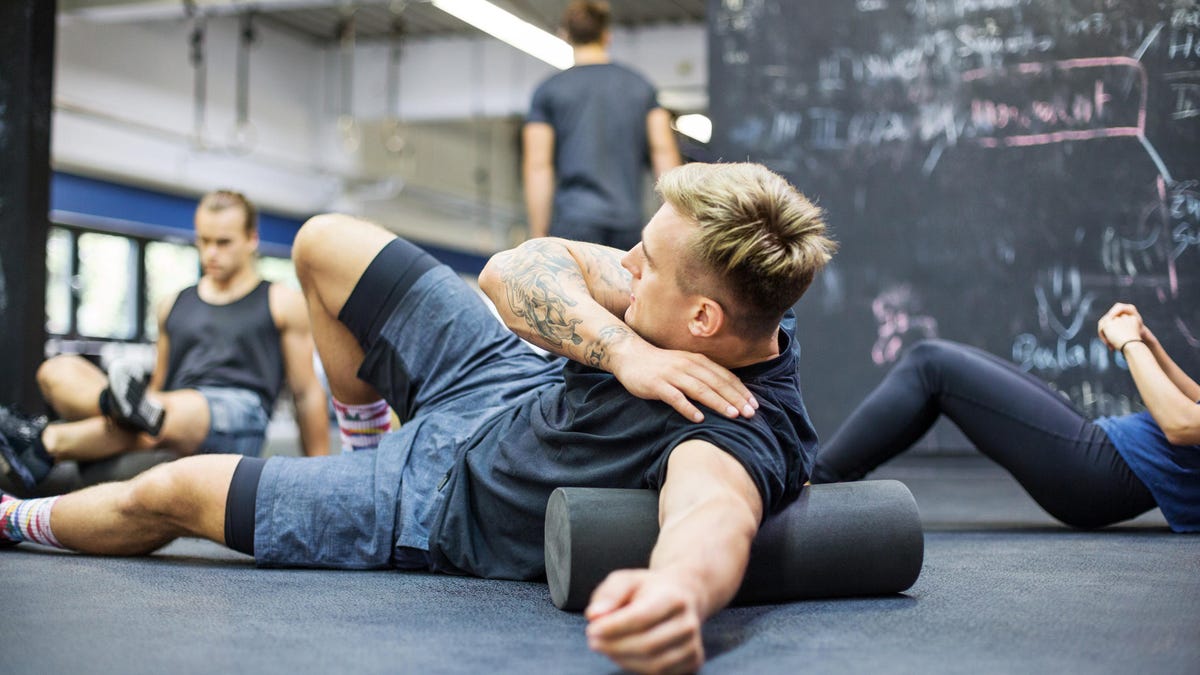Does foam rolling really work to relieve sore muscles?
Find out if self-massage is worthwhile or a fitness gimmick.

Foam rolling: Does it really speed up muscle recovery?
These days, it's nearly impossible to walk through a gym without tripping over someone shimmying around on a foam tube. If you're new to the gym scene, don't be fooled: These people aren't wiggling all over the floor because it's fun (though some may beg to differ), they're doing it to bust muscle knots and improve range of motion.
Read more: How to run a marathon without leaving your house
Foam rolling has emerged as the go-to way to recover from workouts because it's quick, easy, inexpensive and 100% DIY. Read on to learn how foam rolling works and if you should try it.
Does foam rolling work?
Perhaps the better question is how foam rolling works. We know that foam rolling hurts while you're doing it, but usually ends in an overall improvement in soreness. A good foam rolling session can help you work the stiffness and aches out of sore muscles, as well as improve flexibility and mobility (though you'll need more than one minute of foam rolling for that).
Read more: The best foam rollers that fitness pros swear by
Scientists thought for years that foam rolling directly affected fascia, the soft connective tissue that basically holds your body together. That's where foam rolling got its scientific name, self-myofascial release.
But some scientists have become skeptical of that claim because manipulating fascia requires much more force than any person's own bodyweight. Instead, foam rolling may actually work on your nervous system to relieve pain. There's also some evidence that foam rolling encourages blood flow, which we know is essential for muscle recovery.
Beyond this, there's still a lot to learn about foam rolling and its effects on muscle recovery and athletic performance, especially when it comes to long-term effects.
So, to foam roll or to not foam roll?
So far, it looks like foam rolling either produces short-term beneficial effects or nothing at all. And there's no evidence that foam rolling is harmful in any way, so it's definitely worth a shot if you are feeling sore.
But if you're desperate for pain relief, you might want to try another method of recovery -- the most recent analysis of foam rolling science suggests that foam rolling is more effective as a warmup protocol than a recovery technique.
How to foam roll
Foam rolling involves applying your own body weight to a foam cylinder, which range from relatively cushiony to frighteningly dense and poky. If you decide to give it a go, try these tips:
- If you're new to foam rolling, choose a softer roller to avoid painful surprises. You can move up to a denser roller after some practice.
- Roll each muscle group for one to three minutes, using slow undulating movements to find tender spots.
- When you hit a tight, tender patch, hold your body weight on that patch for 30 to 60 seconds, then continue rolling.
- Keep your muscles as relaxed as possible. It's harder to massage muscles when they're flexed or contracted.
Hungry for more on muscle recovery? Find out if you should be applying heat or ice to those sore muscles.
The information contained in this article is for educational and informational purposes only and is not intended as health or medical advice. Always consult a physician or other qualified health provider regarding any questions you may have about a medical condition or health objectives.

